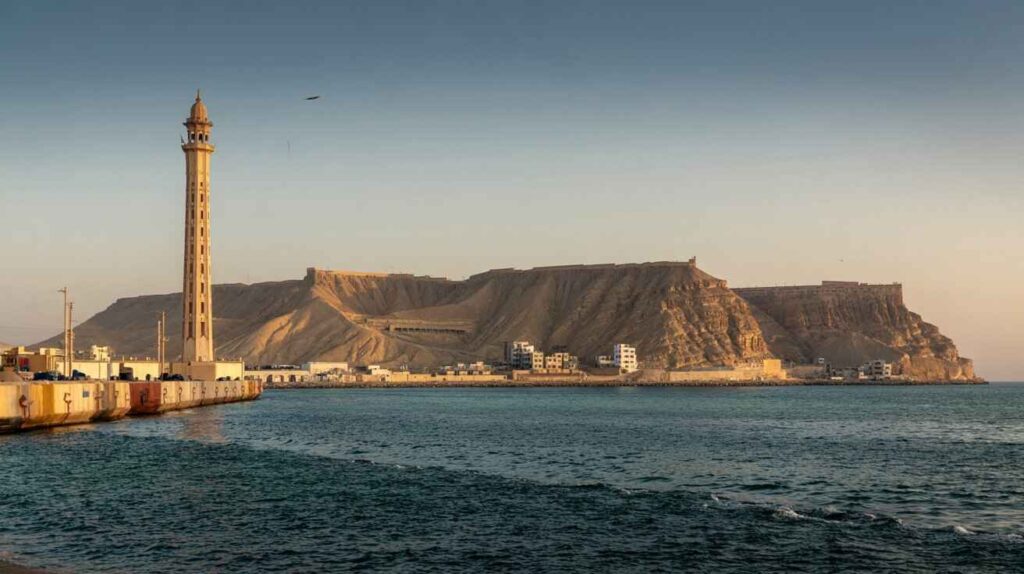The coastal belt of Makran and Gwadar holds extraordinary strategic and economic potential. With the right vision and policy decisions, this region can be transformed into one of the world’s largest economic hubs — a confluence of global trade, energy corridors, and strategic connectivity. One such policy consideration, often overlooked yet firmly rooted in legal precedent and global models, is the federal administration of Makran and Gwadar.
Table of Contents
ToggleHistorical Context and Legal Grounding
The princely state of Makran formally acceded to Pakistan on March 17, 1948, becoming a district of the newly formed country. At that time, however, Gwadar was not part of Makran — it remained under Omani sovereignty until September 8, 1958, when Pakistan acquired it through diplomatic efforts led by Prime Minister Feroz Khan Noon and his wife Viqar-un-Nisa Noon. The acquisition was facilitated by a $3 million donation from Prince Karim Aga Khan IV and eventually made part of the Makran District.
Later, on July 1, 1977, Makran was upgraded to a division and subdivided into the districts of Kech (Turbat), Panjgur, and Gwadar. It is important to note that Balochistan, as an administrative entity, did not exist prior to Pakistan’s independence. These territories were integrated by the Federal Government of Pakistan, giving it a clear constitutional mandate to reconsider their administrative structures — including the option to designate them as Federally Administered Areas (FAAs).
Strategic Imperatives
Gwadar and the Makran coast are no longer just peripheral regions — they are the focal point of global economic and geopolitical competition. As the endpoint of the China–Pakistan Economic Corridor (CPEC) and a potential junction for Russian, Central Asian, Middle Eastern, and South Asian trade and energy routes, Gwadar stands on the cusp of transformation.
Declaring the region a Federally Administered Area would allow the central government to fast-track its development, streamline governance, and ensure robust security mechanisms — all necessary prerequisites for attracting global investment and fostering economic growth.
This approach mirrors successful international examples:
-
Washington D.C. (District of Columbia) in the United States
-
Federal District of Brazil
-
Australian Capital Territory (ACT)
-
Federal Territory of Malaysia (Putrajaya)
These are regions where the federal government assumes direct administrative control, bypassing the limitations and inconsistencies of state or provincial structures. The result: focused governance, accelerated development, and national integration.
Gateway to Regional Prosperity
With CPEC infrastructure already in place, and parallel initiatives like the Russia–Pakistan Trade Corridor, Central Asian oil and gas routes, and the proposed TAPI pipeline, the groundwork for a high-tech economic ecosystem is laid. The development of subsea pipelines connecting to the Middle East, digital trade infrastructure, and logistics networks can further position Gwadar as a 21st-century trade metropolis.
Such a transformation will not only serve Pakistan’s national interest but also benefit South Asia, the Middle East, Central Asia, and Europe, by offering secure trade channels, diversified energy routes, and a shared economic platform.
Managing Security and Regional Stability
Pakistan’s adversaries have actively sought to destabilize Balochistan through proxy terrorism and disinformation campaigns. A federally administered Gwadar-Makran region would enable tighter security, more effective intelligence operations, and coordinated economic policymaking — reducing internal vulnerabilities while projecting external confidence.
Countries with currently strained relations could be brought into cooperative frameworks through economic incentives — such as access to energy corridors, trade connectivity, and joint development projects. This will reduce conflict and create shared stakes in regional peace and stability.
Leadership and the Road Ahead
Pakistan’s civil and military leadership, particularly under COAS General Asim Munir, has shown boldness and clarity in articulating a vision for the country’s economic revival and national security. As he aptly stated, “A few thousand anarchists cannot stop us from achieving our destiny.” That same resolve must now be channeled into reshaping the future of Gwadar and Makran — not through political hesitation, but through constitutional foresight and strategic will.
Conclusion
The proposal to declare Gwadar and Makran as Federally Administered Areas is not merely a bureaucratic adjustment. It is a bold strategic step — one that could rewrite Pakistan’s economic future, deepen regional integration, and assert Pakistan’s rightful place in the emerging global order. The time to act is now.

Maj Khurrum Baig (R)
Khurrum Baig is a Master Aviator and defense analyst with over 24 years of distinguished service in Pakistan Army Aviation. He is an Instructor Pilot, Test Pilot, certified Aircraft Accident Investigator, and specialist in Aviation Refueling & Equipment. Currently engaged in international corporate roles, he writes regularly on military strategy and geopolitical affairs.
- Maj Khurrum Baig (R)#molongui-disabled-link
- Maj Khurrum Baig (R)#molongui-disabled-link













